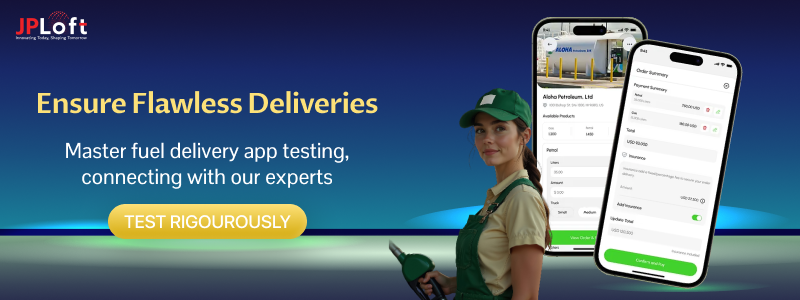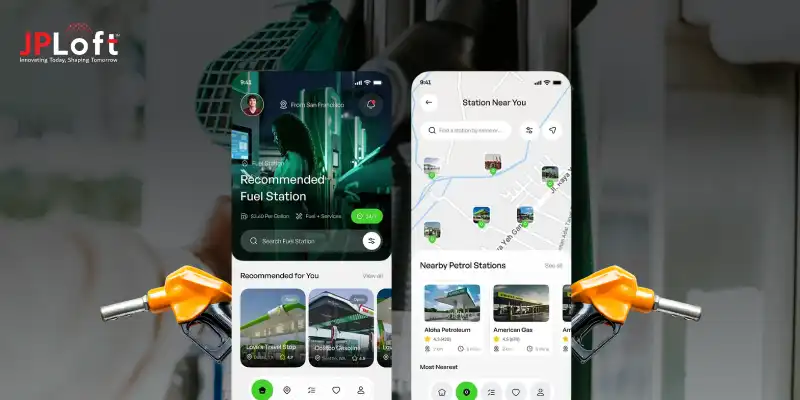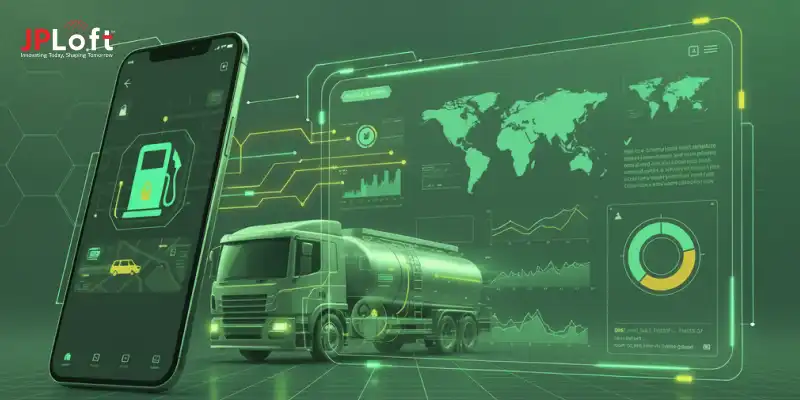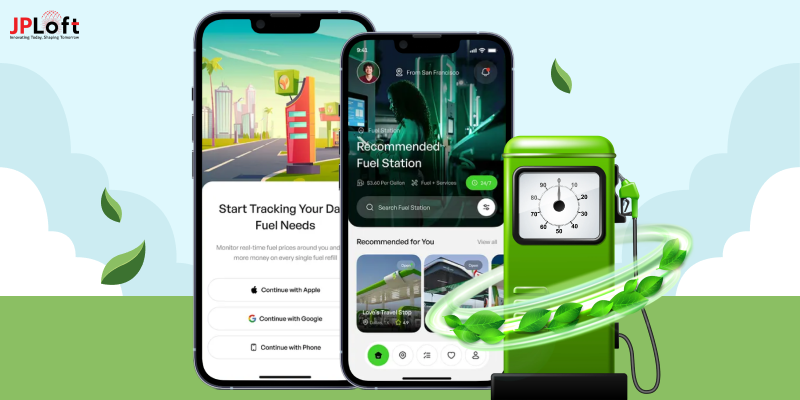"Quality is never an accident; it is always the result of intelligent effort."
— John Ruskin
An effort that developers put into identifying and reducing all the errors in your app, to provide your users with seamless functionality.
Developing an app is not enough if it contains multiple errors and issues. Thus, testing becomes a crucial part of this process.
When it comes to a fuel delivery app, it's essential to test it, which can help in enhancing productivity and boosting user trust.
"For a fuel delivery app, testing isn't just about finding bugs; it's about building trust, ensuring safety on the roads, and guaranteeing that a critical service never leaves its customers stranded."
— Rohan Sharma, Digital Innovation Consultant
However, all you need is an effective testing guide to continue.
Well, you are at the right place to get it all.
Here you will find the reasons behind testing a fuel delivery app, key areas, steps, essential tools, and best practices.
Are you ready to proceed?
Yes! Let's begin.
Why Test a Fuel Delivery App?
Are you wondering about testing a fuel delivery app? In that case, it's essential to ensure a smooth and reliable user experience, as well as to identify and resolve potential issues before they impact customers’ experience.
Well, when you create a fuel delivery app, it's important to ensure that it works efficiently. Hence, testing is an important phenomenon in this respect.
Now, let's evaluate some of the important reasons to conduct testing.
1. Enhance Functionality
You should ensure that the fuel delivery app works properly, and through testing, you can achieve this state efficiently. It helps in optimizing the complete performance of the app and enhances user experience.
2. Helps in Reducing Bugs and Errors
It's important to improve functionality by identifying and fixing the errors as well as bugs, to ensure that the features work as intended, for optimizing the performance and usability. Testing is useful for catching bugs early in the overall development cycle.
3. Reduced Risk
With the help of testing, you can reduce the risk of software failures, security breaches, and even performance issues, which can negatively impact the users and their businesses. It does help the businesses to meet the software industry standards and compliance.
4. Cost Saving
Through the help of testing, you can save the cost of investing in the app, to mold it, and early detect the bugs and errors, later in the development cycle. You can strategically use automation testing by prioritizing the testing efforts and considering outsourcing to reduce the costs of developing a fuel delivery app.
5. Streamlining Operations
You can streamline the operations in your fuel delivery app through testing the admin panel, which helps to ensure that the fuel providers can manage drivers, orders, and even the inventory, by optimizing operational efficiency.
6. Ensuring Safety and Security
With the help of app testing, you can validate the security of the app’s payment gateway, protecting the user's financial information as well as preventing fraudulent transactions. The app security testing can help protect them against attacks and security issues.
These were some of the important aspects of testing for the fuel delivery apps. Now, let's discover the important areas of the fuel delivery app testing in the area below.
Key Areas of the Fuel Delivery App Testing
When you start an online fuel delivery app business, your business must attract users and resolve their issues related to fuel consumption.
Under this process, mobile app testing can help you in reducing any potential errors and risks that can arise while developing the platform for your business.
Here, the question arises: does every area of your fuel delivery app need to be tested?
Well, let’s discover it all below.
1] Location Accuracy
Here, you should detect that GPS functions smoothly, and helps the users to identify and track the location of their ordered fuel.
This proactive approach can assist users in effectively optimizing the delivery routes, evaluating the quality of the fuel, and maintaining the safety standards.
2] Payment Processing
Payment processing is an important area for the fuel-delivery network, which helps to ensure secure, convenient, and reliable transactions for both the customers and the service providers.
By testing the payment processing sources, you can detect and mitigate any technical glitches that might arise when users proceed with the payment system.
3] Logistics Management
You should evaluate the logistics operations, and need to handle the complex operations of the fuel delivery from sustainable and secure vehicles, to optimizing their routes.
This process can help you in delivering propane to potential customers to tracking that the quality fuel reaches the users.
4] Design (UI/UX)
Without an attractive and attentive fuel delivery app design, you cannot engage the users in the long run. Hence, checking the UI/UX for the app is one of the important parameters to consider.
A well-designed, tested app will assist users in proceeding with an ideal navigation and in addressing their issues related to fuel.
5] Performance Testing
The performance testing is one of the crucial parameters for your fuel delivery app testing. Here, you can optimize the functions of the app by selecting crucial fuel delivery app features to help users order fuel whenever they want to do it, remotely.
The performance testing is an important area for meeting the expected standards of speed, stability, and responsiveness under the diversified conditions.
6] Safety Area
You should ensure the safety of your app through successfully enabling the secure payment process, integrating safe APIs, and much more.
Fuel delivery app security is all about integrating safety standards. You must check out the secure industry standards for ensuring that the app bolsters the trust of potential users.
7] Integration Testing
An integration test for the fuel delivery app comprises verifying that all the different components and modules of the application work together as expected, especially those related to core functionalities like fuel ordering and user registration.
This comprises testing the payment processes, Real-time tracking, social sharing platforms, fuel delivery app GPS tracking, and various other features to boost users’ experience.
8] Functionality Testing
It's important to test all the features and ensure that they work efficiently as per the designed objective of the project. You can check the fuel delivery app tech stack and reduce backend issues.
Under this testing process, all you need to do is verify the inputs, outputs, data manipulation, and user interactions, along with the system’s response to different conditions.
9] User Acceptance Testing (UAT)
The user acceptance testing is the final phase of the software development, where the end users and the client test the software to ensure it meets their needs and business requirements, before it’s officially released.
This is an important area for fuel delivery app testing, to identify any overlooked issues or improvements needed to ensure a positive user experience.
10] Compliance Check
Now, you should go through the compliance check procedure, which is all about verifying if an organization adheres to the relevant laws, regulations, and policies in the fuel delivery industry.
This area is crucial for meeting the fuel industry standards, which include vehicle safety, user safety, and area safety. Fuel delivery app compliance guidelines should be followed.
These were some of the essential areas for the fuel delivery app testing to be considered successfully.
Now, let's move forward to learning the process for conducting fuel delivery app testing.
How to Test a Fuel Delivery App?
The process of fuel delivery app testing can guide you through the steps to follow.
Here are the key steps to follow.
Step 1: Planning and Strategy
You should plan the complete testing procedure strategically. Here, it's significant to know when it's right to test the fuel delivery app, then to plan the strategies accordingly.
One of the crucial steps that lies here is defining the system and procedure, identifying the user personas, and selecting the types and method of testing.
It's essential to identify critical functionalities for determining the key features that need to be thoroughly tested. Here, you need to set the testing goals and requirements for your project.
Step 2: Prepare the Environment
Now, based on the requirement of your project objective, you should prepare the environment.
Under which it's essential to gather the requirements for your business project, set up the server, configure the network, and prepare for the workstations.
Here, you can outline the test objectives and select crucial testing approaches and methodologies for testing your fuel delivery project.
Step 3: Select the Right Testing Tools
It's time to select the potential and right testing tools for your customized fuel delivery app. Here, you can hire dedicated developers to mitigate the potential errors and test your app rigorously.
Under this step, you should explore diversified options for research, including both commercial and open-source, to align with your project requirements.
Your choices for the testing tools can be Appium, Selenium, Espresso, etc., for conducting complete native and hybrid testing for fuel delivery apps.
Step 4: Test Execution
Now, here you should execute the complete testing process. This can all begin with the functional testing that comprises testing the user panel, driver panel, and even evaluating the admin panel.
It is an important phase in the application testing process, where the test cases are used to specify the requirements of the app.
This step is all about running the test cases based on test scenarios that are created for the software applications to ensure that they all meet the predefined functional and non-functional requirements of the app.
Step 5: Bug Reporting and Tracking
Now, when you execute the testing procedure, you might come across bugs and errors that might impact the functioning of the fuel delivery app.
Here, you should track the root cause of the bugs and address them by using tools and techniques. Whether it's about the features or the backend, all should be tested rigorously.
You can even ask to manually test the code from the developers, and it should automatically test it rigorously under all circumstances.
Step 6: User Acceptance Testing (UAT)
It is the final phase of fuel delivery app testing. Here, the real end users test the software to ensure that it meets their potential needs and basic requirements.
Under this phase, the software is tested in the real world by the intended audiences.
Here, you should identify the bugs in software, systems, and networks that might cause issues for potential users. This will help you boost the overall performance of your fuel delivery app.
Step 7: Post-Launch Monitoring and Maintenance
Now, once you launch your fuel delivery app, it's important to monitor it regularly and address any bugs or errors in this process.
Here, it's essential to go for mobile app maintenance services, which can help you with identifying and addressing any errors that might cause functional errors in the app or hamper the user experience.
This tracking the performance of the app refers to the ongoing activities performed after an app’s release to ensure its continued functionality, security, and relevance.
These were the important steps to consider when you proceed with the fuel delivery app testing. Now, let’s learn about the essential tools for fuel delivery apps in the following section.
Essential Tools for Fuel Delivery App Testing
We understand that in this dynamic world, it's critical to identify and evaluate the critical tools for fuel delivery.
Let’s learn about the tools that can be used successfully in this section.
► Appium
Appium is a popular and open-source tool used for automating the fuel delivery app testing process. This helps identify the errors and mitigate them automatically, without any human interference.
It enables testers to write the test scripts of the different programming languages and then leverage the same API across diversified platforms.
► Selenium
Selenium acts as an open-source umbrella project for a diversified range of tools and libraries. It allows agents to complete native and hybrid testing for the app in an open source.
This tool helps testers to interact with web browsers programmatically, simulating user actions for verifying functionality, compatibility, and performance across diversified platforms and browsers.
► MobSF (Mobile Security Framework)
It is an open-source tool for the static and dynamic analysis of Android and iOS apps, helping identify vulnerabilities in code, configurations, and permissions.
This is a widely used open-source tool that is designed to assist you in performing static and dynamic analysis for iOS and Android.
► Perfecto
Perfecto is a cloud-based platform that specializes in mobile app performance testing under real-world conditions, including network virtualization and device vitals monitoring.
With the help of Perfecto AI, you can transform the way teams approach testing by wisely analyzing the scenarios, visually validating the applications, and accepting the changes.
► Espresso/ XCTest
For native Android and iOS app testing, Espresso is one of the tools that should be considered. It is a native framework for UI testing.
It helps the developers to write automated tests for verifying the functionality and user interface of the applications.
► TestRail
A dedicated test case management tool known for its user-friendly interface, real-time reporting, and seamless integration with various bug trackers and automation tools.
This tool allows the team members to design the test cases, organize test suites, execute the test runs, and track their results, all from the modern and easy-to-use web interface.
Other than these, you can check out the tools in the table given below.
|
Testing Type |
Purpose |
Recommended Tools |
|
Functional Testing |
Verify all app features work correctly for all users. |
Appium, Espresso (Android), XCUITest (iOS), Katalon Studio, BrowserStack/LambdaTest |
|
Performance Testing |
Assess app responsiveness, stability, and resource usage under load. |
Apache JMeter, BlazeMeter, NeoLoad, Android Profiler, Firebase Performance Monitoring |
|
Security Testing |
Identify vulnerabilities to protect user data and ensure secure transactions. |
MobSF, Burp Suite, OWASP ZAP, Checkmarx/Veracode |
|
Usability Testing |
Evaluate how easy, intuitive, and satisfying the app is to use. |
UserTesting, Lookback, Userlytics, Hotjar |
|
Compatibility Testing |
Ensure correct functionality across devices, OS versions, and networks. |
BrowserStack, LambdaTest, Kobiton, Appium |
|
Integration Testing |
Verify seamless communication between the app and all third-party services. |
Postman, JMeter, Katalon Studio |
|
Crash Reporting |
Monitor and quickly identify app crashes and errors in production. |
Firebase Crashlytics, Sentry, Instabug, BugSnag |
After discussing the key areas, the fuel delivery app testing steps, and efficient tools, now, we have approached the steps that will help to opt for the best practices in the given section.
Best Practices for Effective Fuel Delivery App Testing
The key practices can be helpful for you to lead the industry, which include rigorous testing of the core features such as location tracking, order management, and payment processing.
Let’s learn more about the best practices in the points below.
1. Define a Clear Testing Purpose
You should pinpoint the critical functionalities of the app, including user registration, fuel selection, payment processing, and order management. The purpose of the app says it all; whether it's testing or selecting the features, the objective helps you in the selection process.
2. Select the Prompt Testing Types
It is important to select the core testing types that are relevant in the process of fuel delivery app testing initiatives. This will help you to achieve the desired project growth in this competitive era by selecting a suitable type.
3. Start with an MVP
You should begin with a minimum viable product (MVP) and test it rigorously. This version needs to include the essential features for the initial launch to gather user feedback and iterate on the app’s functionality and user experience.
4. Utilize Test Automation
It is important to utilize test automation, as you cannot always consider the testing process manually. This can help you avoid the manual errors that might result in hampering the performance of the users.
5. Monitor Performance Metrics
You should include the performance metrics in the app that will help you in identifying any errors or mistakes automatically, and will inform you about the fuel delivery apps. This can bolster the performance of the app and improve your position among the competitors.
These were some of the important practices that you can opt for here.
Connect with JPLoft to Test Your Fuel Delivery App
You might not be an expert at using vital tools to test the fuel delivery app, right?
Well, let’s connect with us and get your app ranked in this competitive environment.
We are the leading Fuel Delivery App Development Company, which can help you in discovering the right steps, tools, and techniques for developing, testing, and even maintaining your app.
Developers of JPLoft can guide you with the potential strategies for successfully developing the app. We can help you identify the prospective features and techniques that are important to boost your app’s positioning in this competitive era.
Our team is ready to develop your app and effectively maintain it as per the required purpose.
Conclusion
A successful fuel delivery app hinges on meticulous testing. This guide highlights the critical need to test every facet, from core functionality like location accuracy and payment processing to backend logistics, UI/UX, and robust security.
By following a structured process, planning, environment setup, tool selection, comprehensive execution, bug reporting, UAT, and post-launch monitoring, developers can identify and resolve issues early, saving costs and enhancing user experience.
Leveraging tools like Appium, JMeter, MobSF, and Firebase Crashlytics ensures a reliable, secure, and high-performing application that meets industry standards and customer expectations.
FAQs
Testing ensures a smooth, reliable, and secure user experience, helping to identify and fix issues early before they impact customers and business operations.
Key areas include location accuracy (GPS), secure payment processing, efficient logistics management, intuitive UI/UX design, performance under load, and overall app security and compliance.
Essential types are functional, performance, security, usability, compatibility, and integration testing, each addressing specific aspects of the app's functionality and reliabilit
No, a combination of manual and automated testing is recommended. Automation handles repetitive tasks efficiently, while manual testing covers complex scenarios and user experience nuances.
Conduct compliance checks as part of your testing process, verifying adherence to relevant laws, regulations, and safety guidelines for fuel handling, vehicle safety, and data privacy.













Share this blog